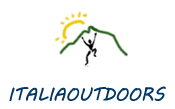In the foothills of the province of Treviso, about 30 km north of the city of the same name, is the DOCG of Colli di Conegliano. Lying roughly within the same geographical boundaries of the more well known DOCG, Prosecco di Conegliano e Valdobbiadene , here one will find still wines produced to the same high quality standards. Conegliano itself is a lovely town, noted historically for its wine production, and still home today of the oldest and most prestigious wine school in Italy, the Scola Enologica.
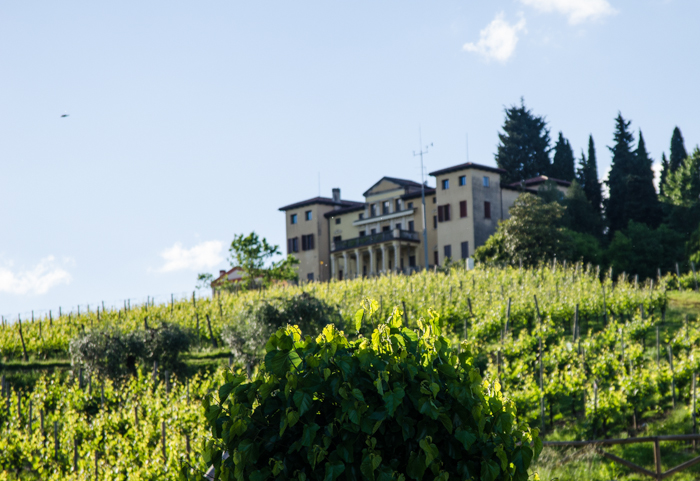
Conegliano lies on the cusp of three wine zones, with very different terrain, and therefore producing a wide variety of wines. The flatter terrain to the south, along the Piave river contrasts nicely with the foothills of the Alps to the north, all providing some great cycling options for our bike tours as well! During a visit, make sure to take a trip up to the Castello di Conegliano to view the bell towers, the painting gallery in the Civic Museum, and taste a glass of wine from the Colli di Conegliano DOCG at the delightful restaurant here.
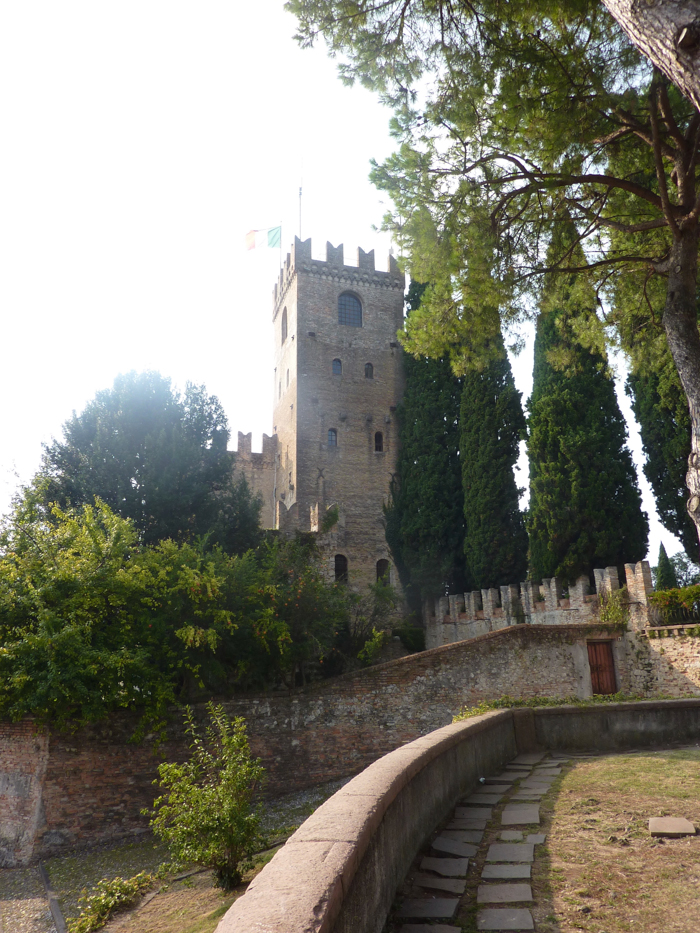
The wines from the Colli di Conegliano DOCG are white, red and two sweet wines, one the Torchiato of Fregona, and the other called Refrontolo. The DOCG quality guideline specifically mention that these grapes are considered unsuitable for vineyards in the valley, and so much come from the Colli, “hills”.
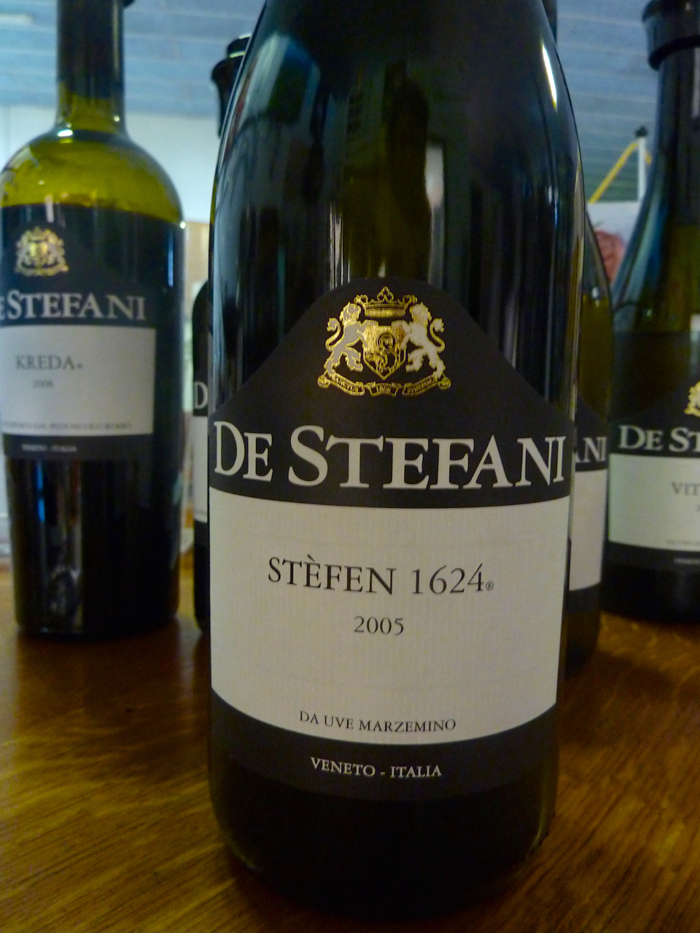
Colli di Conegliano Bianco: A white blend of Chardonnay (30-70%), Incrocio Manzoni 6.0.13 (30-70%) and Riesling Renano and/or Sauvignon Blanc (up to 10%.) The Bianco presents a bouquet of fruit with floral notes. Fruit flavors balanced with a pleasant acidity balance nicely, with a fresh, crisp finish. Enjoy it with salads, fresh cheese, or seafood dishes.
Colli di Conegliano Rosso: An interesting red blend of the native Marzemino, with Cabernet Sauvignon and Cabernet Franc (each 10-100%), Merlot (10-40%), and Manzoni Incrocio 2.15 (up 10%.) The Rosso requires a minimum aging of 24 months of which at least 6 must be in barrel, and three in bottle. These wines are typically ruby red in color, tending to garnet. An intense fruity and vinous nose, dry and full-bodied, with a tannic finish. It pairs well with roasted meats and aged cheeses.
Colli di Conegliano Refrontolo: This is a sweet passito wine, produced in the area around the town of Refrontolo, is generated from dried grapes of the native variety Marzemino (95-100%.) Marzemino has been cultivated in the Veneto region since ancient times, and enjoys the reputation of being Mozart’s favorite wine since his famous operat Don Giovanni included a last request of Giovanni before his deliverance to hell - a glass of Marzemino.
Colli di Conegliano Torchiato di Fregona: This white wine, from a production area centered around the municipality of Fregona, is made from dried grapes of the following varieties: Glera (formally known as Prosecco), Verdiso, (each 30-45%), Boschera (25-40%), and any other permitted white varieties also produced in the region. This is a sweet wine of golden-yellow color, quite rare as it is produced in limited quantities. The name derives from the particular method of pressing the raisins.
Vicenza is a DOC of the Veneto wine region, named for the both the province and the city of the same name that is it’s administrative center. The DOC region covers almost the entire province, and can be a bit confusing as it includes land covered by several other wine regions, including Gambellara, Monti Lessini, Colli Berici and Breganze. It is also a fairly recent DOC, founded in 2000.
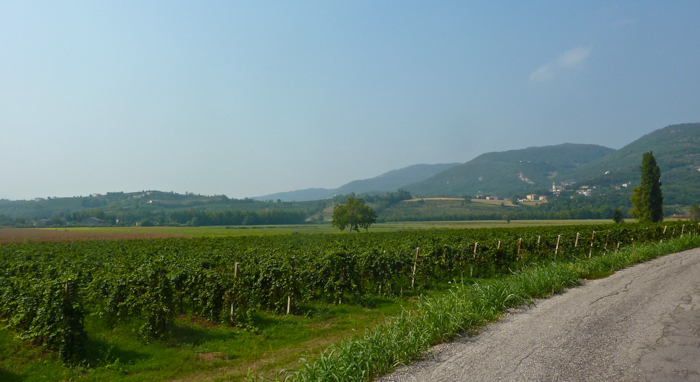
The city of Vicenza lies at the northern end of the Colli Berici hills, at the foot of Monte Berico. The Basilica di Santa Maria di Monte Berico stands at the top, constructed around the year 1430 following two separate sightings of the Virgin Mary, who ordered the church's construction. Today, pilgrims still visit the Basilica to implore the assistance of the saint.
The Bacchiglione river flows north-south through Vicenza, from the Alps to the Adriatic. The river's water quality has recently fallen to dangerously low levels, and high amounts of fertilizer washing into the river from its watershed have caused the river to become highly contaminated. Most of the quality vineyards are located high up in the hills, but vineyards located in close proximity to the river should warrant attention.
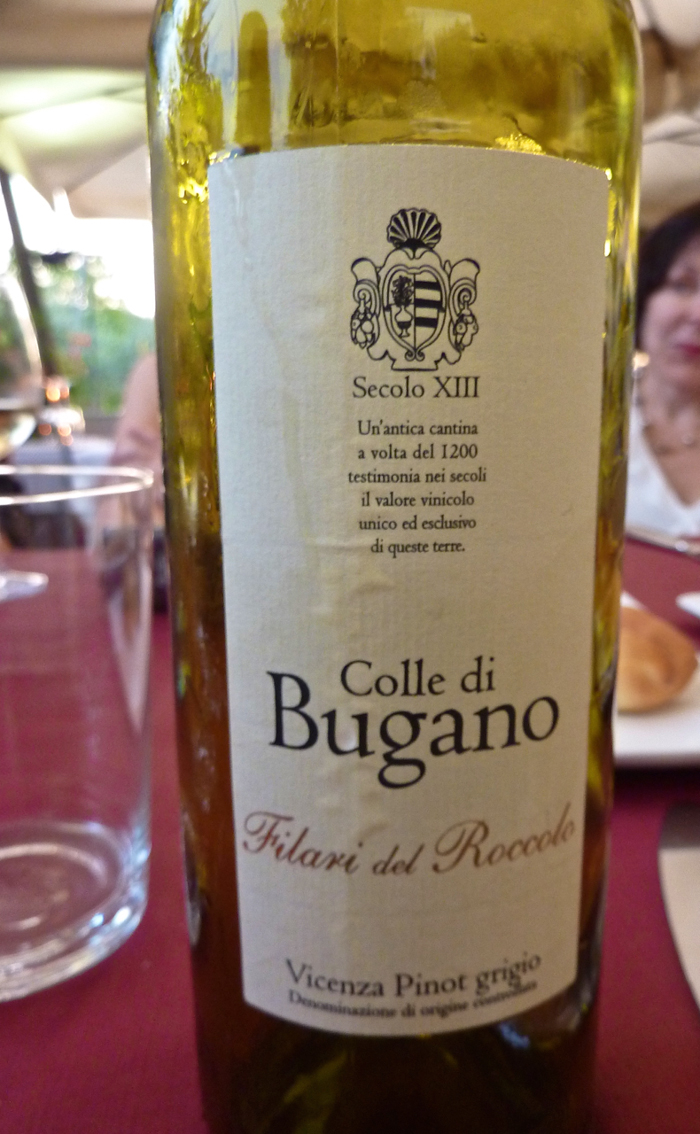
The wines from the Vicenza DOC are pretty typical for a Veneto wine region. It’s bianco blend must contain at least 50% Garganega, with the remainder being any of the other nonaromatic white varietals listed below. The rosso blend is similar in definition, based on Merlot. There are still, sparkling, and even sweet (passito) versions of these blends.
Varietal wines from the region must contain at minimum 85% of the named varietal. For whites, international varietals Sauvignon Blanc, Pinot Bianco, Pinot Grigio, Riesling and Chardonnay can be used, as well as several indigenous grapes, including Manzoni Bianco, Moscato Bianco, Moscato Giallo, Garganega, and Riesling Italico. Sparkling wines are produced from Chardonnay, Pinot Bianco, and Garganega.
Red varietals include Merlot, Cabernet Sauvignon, Pinot Noir, Cabernet Franc, and the native grape Raboso. Those bearing the Riserva label must be aged at least 2 years, including 3 months in wooden casks.
The Bagnoli di Sopra DOC, established in 1995, covers an area that includes 15 municipalities in the Veneto province of Padua. The heart of this wine region is the town of Bagnoli di Sopra, an ancient Longobard village that grew up around the Benedictine monastery of San Michele Arcangelo. The Benedictine monks established themselves in this area, which was swampland when they arrived. These industrious monks set about reclaiming the land from the water, by building drainage and canal systems. Due to their hard work, cultivation of grapes and other crops became possible in this area.
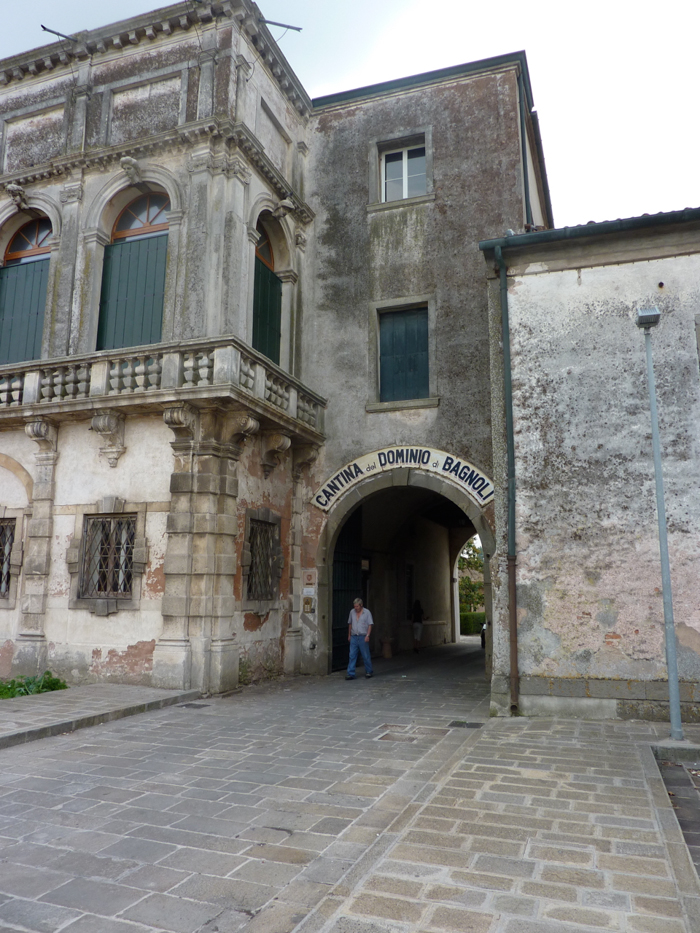
For centuries, the wine produced here had been renowned in the neighboring villages, but its fame never went beyond the local boundaries. The DOC designation has begun to reverse this situation and make it possible for the producers of this wine to compete with other Veneto wines in the domestic and international markets.
The most interesting wine of this DOC is the Friularo, a full-bodied red made with the indigenous Raboso grapes, named after an affluent of the Piave. This is a round, mellow wine that is at its best after at least two years of aging. In its "Vendemmia Tardiva" (late harvest) version, the grapes are gathered only as they start to wither.
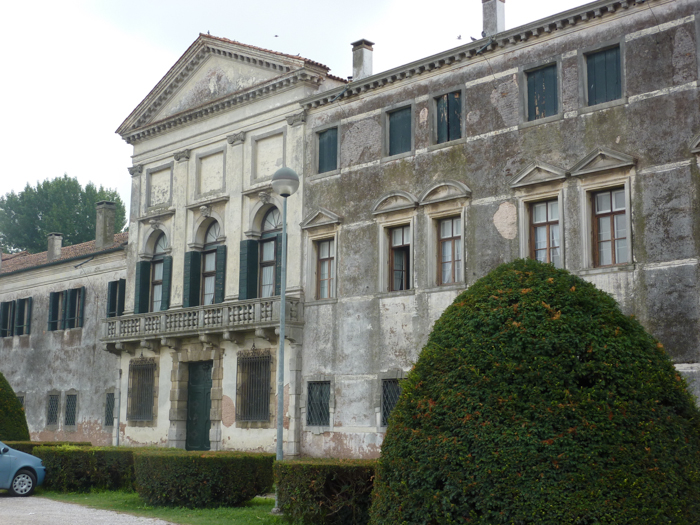
Some researchers believe that the Friularo wine hails from the Friuli region of Italy; transferred by the De Widmann family. Others disagree, claiming that in Veneto dialect it would be said friulan or furlan, coming from the Latin frigos or frius (cold), and aro, meaning “he who was”. Therefore Friularo is a grape that ripens with the cold. Friularo is an extremely late maturing grape and is traditionally harvested after the Bagnoli Friularo Festival, in October, and partly after the summer of St. Martin, in the second half of November. Friularo is also an exceptionally hardy variety, managing to survive the phylloxera epidemic in the late 18th century.
The river Adige today passes only a few miles away from the Bagnoli region: this alluvial terroir gives the wine a singular structure and body, and enhances the aromas through cool summer nights.
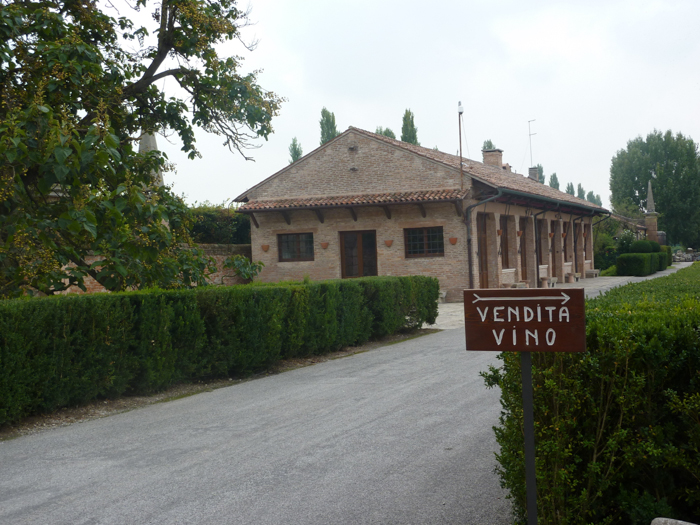
The oldest known document that speaks about Bagnoli, the donation act by the Duke of the Lombards to the Bishop of Padua in 954, describes the presence of land with a vast amount of vineyards. The “Dominio” then passed to the Order of the Benedictines. Many documents of the 13th and 14th centuries refer to donations of land with vineyards and to rents paid with a third plus a tenth of the wine produced to the Benedictine Court of Bagnoli, also known as “San Michele Arcangelo”.
In 1450, the management of the “Dominio” was entrusted to the Order of “Santo Spirito”. A deed of sale of 1656, between Pope Alexander VII and Count Widmann, of the “Dominio di Bagnoli”, corresponds roughly to the DOC region today. In fact, the cellars of the 13th century, built by the Benedictines were then developed by Count Widmann in the 17th century. These cellars are today an Italian National Monument, and still exist and function in the “Centro Storico” of Bagnoli di Sopra.
Wines within the Bagnoli di Sopra DOC include:
Whites:
Bagnoli di Sopra Bianco: Chardonnay 30-70%, Sauvignon Blanc or Fruilano, 20-60%, Raboso Piave and/or Raboso Veronese, 10-50%, and other local white varietals, up to 10%
Rose:
Bagnoli di Sopra Rosato: Raboso Piave and/or Raboso Veronese, at least 50%, Merlot, up to 40%, other local non-aromatic reds, up to 10%
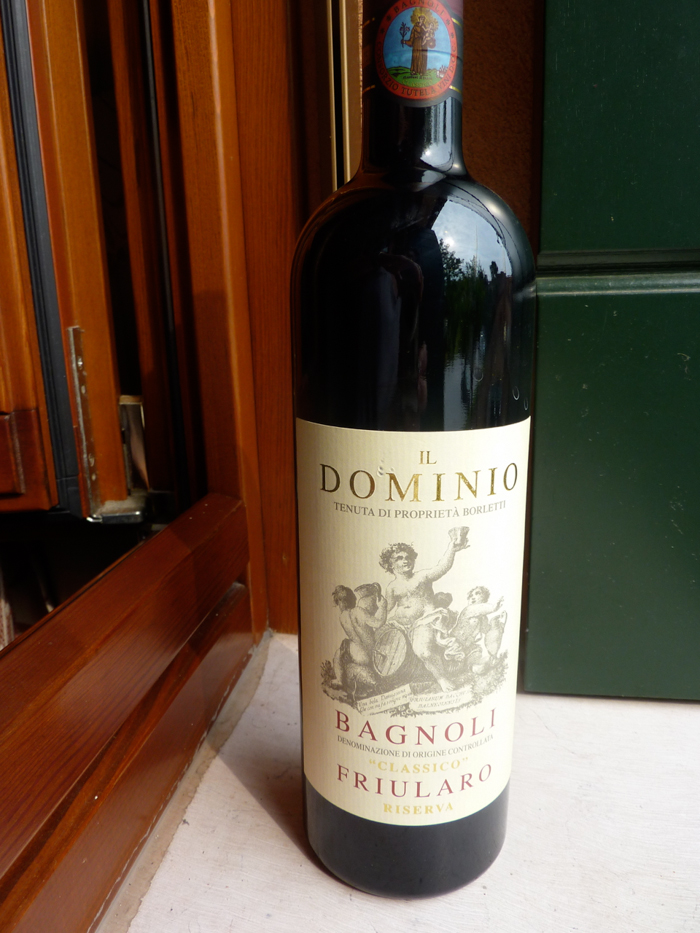
Red:
Bagnoli di Sopra Rosso: Cabernet Franc and/or Cabernet Sauvignon and/or Carmenere, at least 15%; Raboso Piave and/or Raboso Veronese, at least 15%, Merlot, 15-60%, other local non-aromatic reds, up to 10%
Bagnoli di Sopra Friularo: Raboso Piave 90%, other local non-aromatic varieties, up to 10%. Friularo Vendemmia Tardiva - a late harvest version of the same. Riserva and Classico Riserva also available.
Bagnoli di Sopra Cabernet: At least 85% Cabernet. Riserva and Classico Riserva also available.
Bagnoli di Sopra Merlot: At least 85% Merlot. A Riserva and Classico Riserva is also available.
Passito:
Bagnoli di Sopra Passito: A white passito, from Raboso Piave and/or Raboso Veronese, 705, other local varietals, up to 30%.
Spumate:
Bagnoli di Sopra Spumante Bianco and Rosato: Raboso Piave and/or Raboso Veronese, at least 40%; Chardonnay, at least 20%, other local non-aromatic varieties, up to 10%.
Located in the center of the Veneto region, about 75 km north of Venice, the Montello e Colli Asolani DOC is one of the many wine regions in the Veneto. Established in 1977, it originally covered the two basic blended wines - a rosso and a bianco -that had traditionally been produced in this area. Today, and many revisions to the DOC regulations later, this area uses modern wine production techniques to produce a wide range of wines, with a new emphasis on varietals rather than blends.
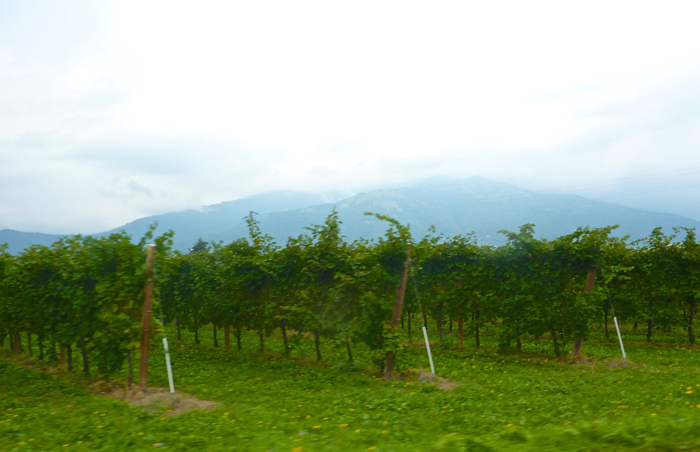
This is one of the smaller DOCs in the Veneto, covering the communes of Monfumo, Castelucco, and Cornuda, with parts of others, including Caerano di San Marco, Crocetta del Montello, Maser, Montebelluna, Nervesa della Battaglia, Pederobba, and most notably Asolo and its surrounding hills (hence the name Colli Asolani.) Montello is yet another hill in the Treviso province, lying next to the Adige River. From the top of Montello, one can see across the plains to Venice and the Adriatic.
Today, the area produces wines from many internationally known varietals, including Chardonnay, Merlot, Cabernet Sauvignon and Cabernet Franc, as well as local varietals Manzoni Bianco and Bianchetta. All varietal wines produced according to the DOC regulations must include at least 85% of the named varietal.
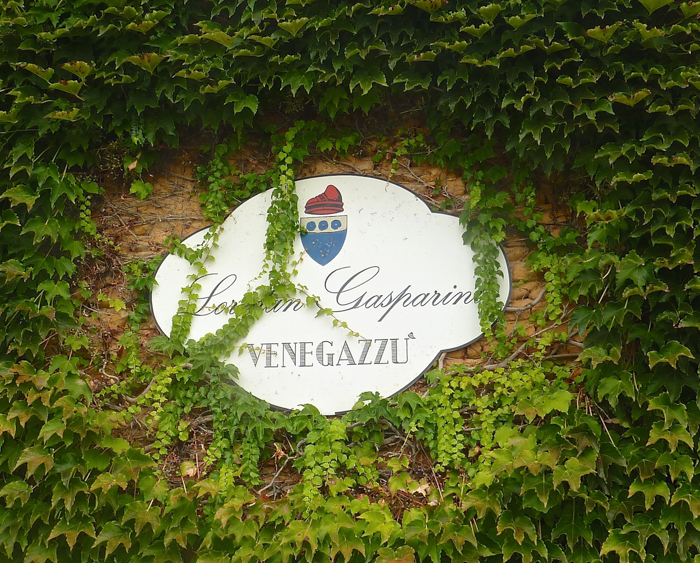
You will also see Montello e Colli Asolani Venegazzu wines from this area. Venegazzu is the designation made under this DOC to refer to red Bordeaux blends (Cabernet Sauvignon, Cabernet Franc, Merlot) from specific vineyards within the Volpago del Montello commune; Venegazzu being a small neighborhood at the foot of the Montello hill in Volpago. The descendant of the Venetian Doge Leonardo Loredan selected this hamlet as the ideal location for their summer home, a magnificent Palladian villa, and planted vineyards around the estate.
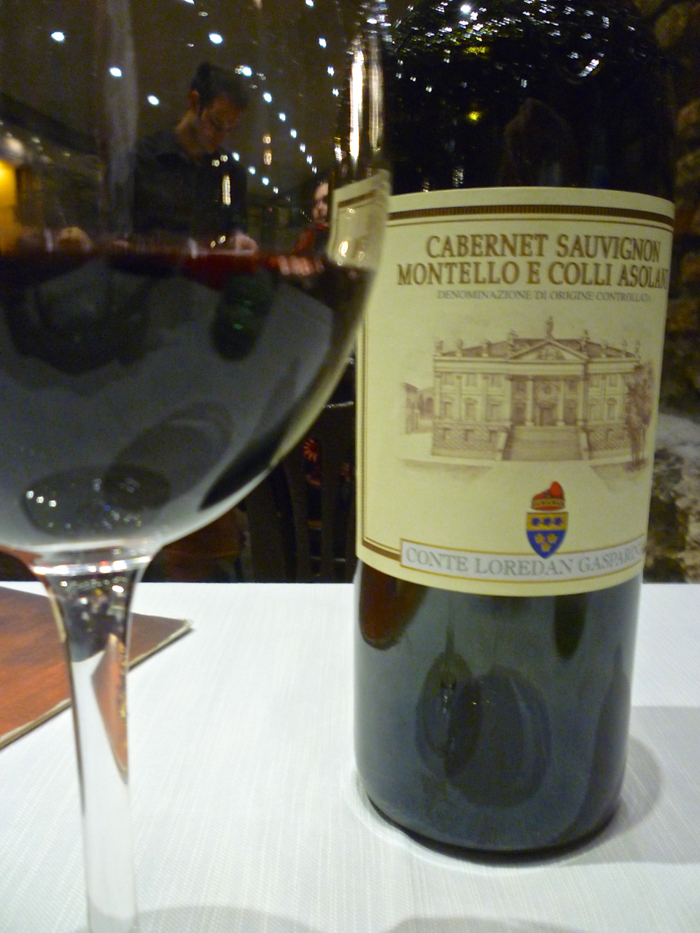
This region has also been known for its sparkling wines, not surprisingly, given its proximity to the Valdobbiadene Conegliano Prosecco DOCG zone, which is just next door. So in 2009, the DOC regulations for the area were again revised, standards tightened, and the DOCG Colli Asolani/Asolo Prosecco appellation was born. Note that these new regulations included the stipulation that the name Prosecco was no longer the name of the grape variety, but instead only referred to the specific region where this wine could be produced. The grape formerly known as Prosecco is now known as Glera.
In addition to Prosecco, this region also produce some very distinctive spumante style sparkling wines made from other varietals, including Chardonnay, Pinot Bianco, and Pinot Grigio.
Quality producers in this region include Ida Agnoletti, Conte Loredan Gasparini, Serafini & VIdotto, Emilio Sartor, and Villa di Maser. Producers of the DOCG Prosecco include Bele Casel, Villa di Maser, and Bedin.
This wine region, little known outside of the Veneto region, lies in the southeast of the province of Padua and the south of the province of Venice. Established in 2004, this DOC recognizes the role the Benedictine monks played in the social and economic development of this area.
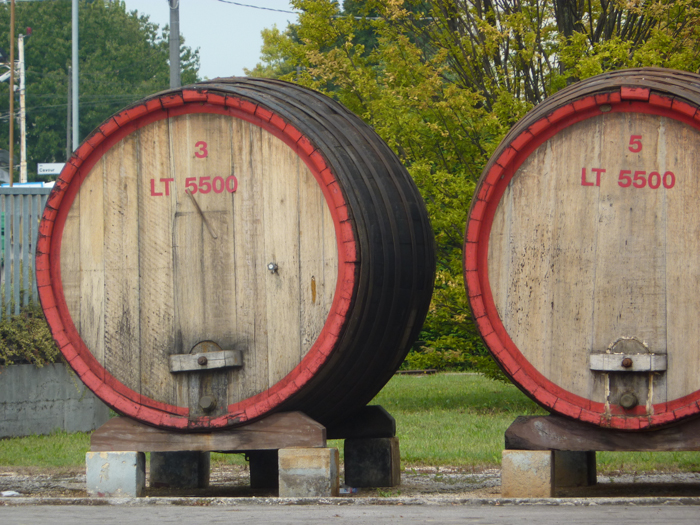
This territory lies between the rivers Brenta and Adige and the Adriatic, an alluvial plain subject to periods of severe flooding. From the 12th century, the Benedictine monks have made their home in this plain, putting huge amounts of effort into reclaiming these wetlands. While also battling wars, malaria outbreaks, and famine, they managed to build canals and drainage systems to create Corti. A corte was the heart of their reclamation effort, and would contain the quarters where the friars lived, as well as houses for the farm laborers. These corti became the social, economic and administrative centers for these large estates for almost 1000 years. The monks were the leaders of the efforts to prepare the land here for cultivation. The wines produced on the lands reclaimed in this area became a major commodity, exchanged with the nearby towns of Padua and Venice, and through the Venetian port, cities across the Adriatic.
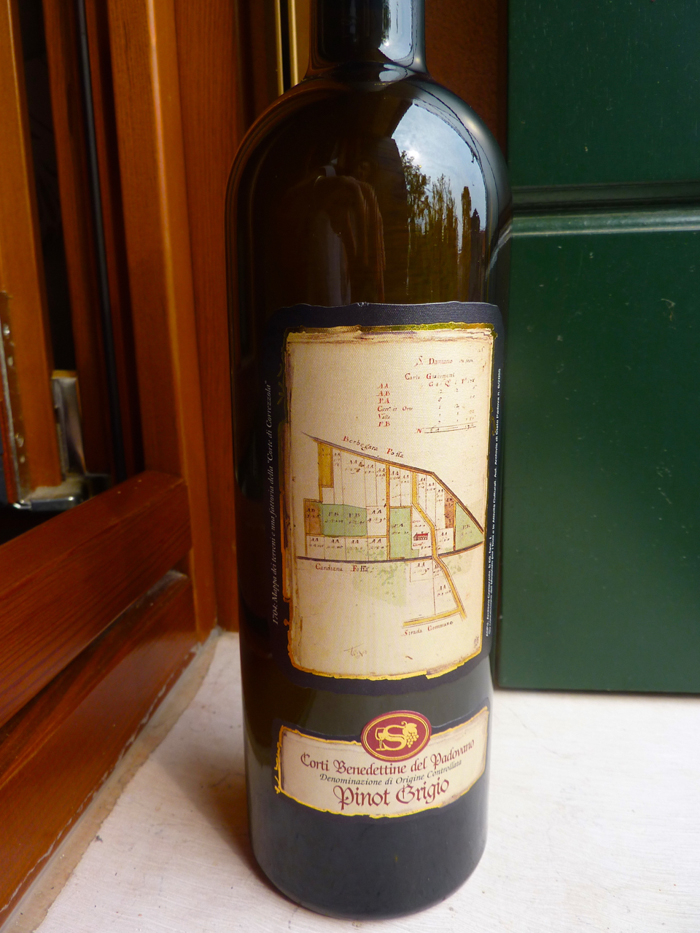
Cultivation of wines in this fairly damp region requires a great deal of local expertise. But local winegrowers have had success with both indigenous grapes as well as (relatively) newly introduced international varietals. Historically, varietals such as Raboso, Refosco, Tocai and Moscato giallo have been cultivated here, and today wine-growers also produce what international varietals that thrive in the excellent local climate and soil conditions: Merlot, Cabernet, Cabernet Sauvignon, Chardonnay, Sauvignon, Pinot Grigio and Pinot Bianco. Most wines in this DOC are best served young, when then exhibit fresh floral notes; others are better left to develop greater complexity with a bit of aging.
White wines included in the D.O.C. are:
Corti Benedettine del Padovano Bianco
Corti Benedettine del Padovano Chardonnay (also sparkling and spumante)
Corti Benedettine del Padovano Pinot bianco
Corti Benedettine del Padovano Pinot grigio
Corti Benedettine del Padovano Sauvignon
Corti Benedettine del Padovano Tai
Corti Benedettine del Padovano Moscato spumante
Corti Benedettine del Padovano passito from Moscato giallo
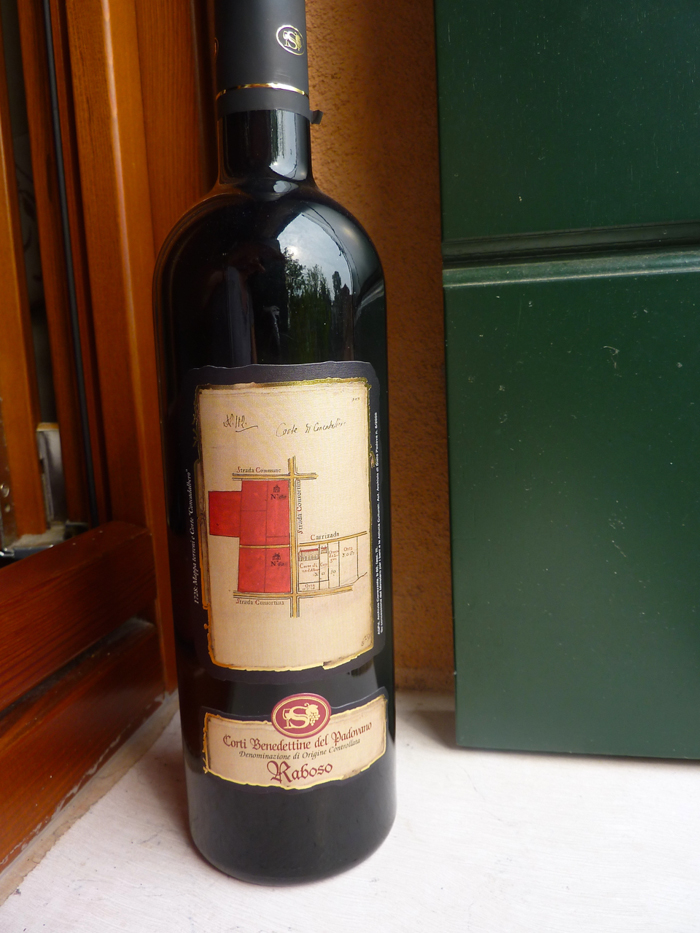
Red wines of the D.O.C. are:
Corti Benedettine del Padovano Rosso
Corti Benedettine del Padovano rosato (rosé)
Corti Benedettine del Padovano novello
Corti Benedettine del Padovano Cabernet
Corti Benedettine del Padovano Cabernet riserva
Corti Benedettine del Padovano Cabernet Sauvignon
Corti Benedettine del Padovano Merlot
Corti Benedettine del Padovano Raboso
Corti Benedettine del Padovano Raboso riserva
Corti Benedettine del Padovano Raboso passito
Corti Benedettine del Padovano Refosco dal peduncolo rosso
Corti Benedettine del Padovano Refosco dal peduncolo rosso riserva


